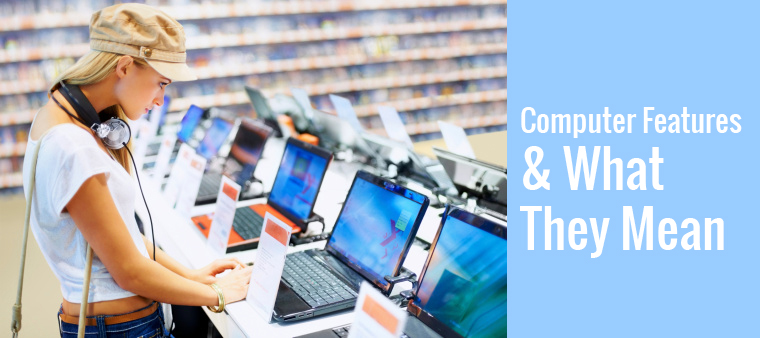Buying a new computer can be a daunting process. If you were to spend $2,000 on a new computer with cutting edge technical computer features you may be sorely disappointed to find out in a year’s time that you cannot perform even a simple upgrade.
Computer shopping doesn’t have to be quite so confusing. Let’s look at some things to consider that can help you.

Start by asking yourself what exactly you need to do with your computer. Each technical computer feature inside your system performs a specific function. Some store your data, some allow the computer to think, and some are responsible for creating the images you see on your screen. Unless you are a power user or hard-core gamer, you shouldn’t need the most high end technical computer features. Instead, consider the idea of future proofing. Nothing is entirely future “proof,” but you can buy a system that allows upgrades in the future.
Here are some of the most important features to consider when shopping for a new computer and what they do.
Motherboard
Arguably the most important piece of this puzzle is the motherboard. The motherboard is the central control hub of any computer, which allows the components to talk to each other. Upgrading a motherboard is a fairly major operation, so ask if the motherboard allows upgrades for of the components.
Hard drives and memory are sometimes confused but they are two distinct elements. The hard drive (or hard disk) is where all of your data is stored, like a filing cabinet which contains not only your own personal files, but the files with instructions for your computer to run and give you your operating system (Windows, Mac, Linux, etc.).
Hard Drive
There are two basic forms of hard-drives: traditional “platter-style,” and Solid State Drives (SSD). A traditional hard-drive is sufficient for average needs but make sure the motherboard offers up-to-date expansion slots so you can add a new or additional hard drives in the future.
The SSD form hard drive is fairly new and more expensive. It allows the data on the drive to be accessed more quickly and is far more impact resistant – which is especially beneficial for a laptop that you will be lugging around with you. Whatever form you choose, investing in a drive with 500 GB or more of space for your files should be more than sufficient.
Memory
Memory refers to Random Access Memory (RAM). The computer uses this for temporary storage of data while your system is on as it is faster than having to pull the data from the hard drive each time it is needed. Ask if the motherboard in the system will allow you to add more RAM in the future so you don’t have to buy an entirely new computer in a year or two.
Central Processing Unit
The Central Processing Unit (CPU) is the brain of the computer, and does all of the calculations and thinking. It is not necessary to get the most cutting edge, expensive CPU but if you consider a mid-range CPU that can be upgraded this will also allow you to avoid buying a totally new system in the near future.
Graphics Processing Unit
The video card – sometimes called the Graphics Processing Unit (GPU) – is what the computer uses to send the images to your monitor. There are many styles ranging from basic GPUs built in to the motherboard to high-end gaming cards that plug in to the motherboard. The average home user shouldn’t need an expensive video card as many systems include one that is more than sufficient for day-to-day tasks like surfing the Web, watching videos online, and playing basic games.
Accessories
If you already have a desktop computer there’s no need to buy a new monitor, keyboard and mouse unless you are not happy with what you have. The same goes for your laptop accessories. Most computers have the same ports that you connect your computer accessories to, so there’s no need to replace your whole system unless you want to.
When you are out shopping and considering these technical computer features, do research online and by speaking with a sales representative to see what your upgrade options will be in the future to get the maximum value for your investment.